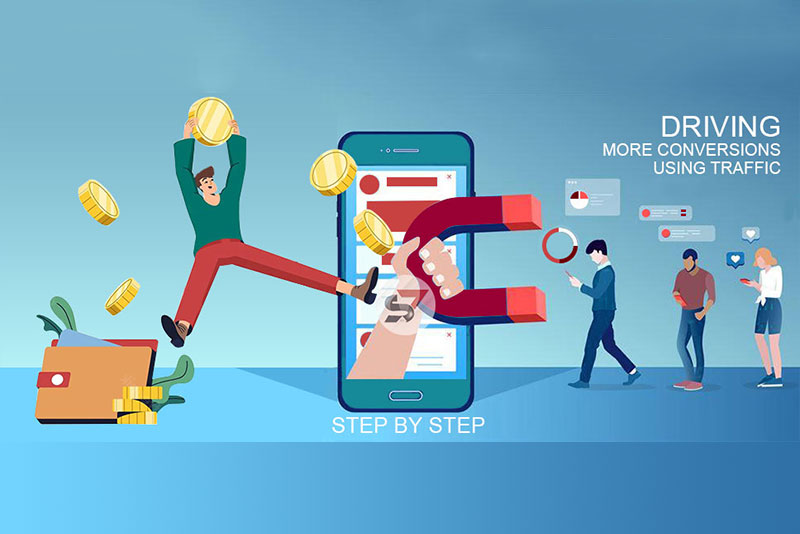
Using Digital Marketing to Drive Conversions in the Non-Profit Industry
In the non-profit sector, driving conversions—whether that means donations, volunteer sign-ups, or engagement with campaigns—is critical to achieving organizational goals. As the world increasingly shifts to digital platforms, harnessing digital marketing is more important than ever for non-profits. This blog post explores various strategies non-profits can implement to optimize their digital marketing efforts and drive conversions effectively.
Why Digital Marketing Matters for Non-Profits
- Enhanced Visibility: Digital marketing expands the reach of non-profits, allowing them to connect with a wider audience, including potential donors, volunteers, and beneficiaries.
- Cost-Effectiveness: Compared to traditional marketing methods (like print or TV ads), digital marketing often comes at a lower cost. This allows non-profits with limited budgets to make impactful campaigns.
- Targeted Messaging: Digital marketing allows non-profits to segment their audiences and tailor messages that resonate with specific groups, increasing the likelihood of conversions.
- Real-Time Insights: Analytics tools provide immediate feedback on campaign performance, enabling non-profits to adjust strategies quickly based on what is or isn’t working.
- Community Engagement: Digital platforms facilitate two-way communication, allowing organizations to engage with their supporters and foster a sense of community.
Strategies to Drive Conversions
- Optimize Your Website for Conversions
- User-Friendly Design: Ensure your website is easy to navigate and mobile-friendly. A streamlined user experience can significantly decrease bounce rates.
- Clear Calls-to-Action (CTAs): Use compelling CTAs on every page. Whether it’s “Donate Now,” “Join Our Newsletter,” or “Become a Volunteer,” ensure they stand out and convey urgency.
- Landing Pages: Create dedicated landing pages for specific campaigns, focusing on a single goal, whether that’s raising funds or recruiting volunteers. Make sure these pages are visually appealing and informative.
- Leverage Content Marketing
- Storytelling: Share compelling stories that showcase the impact of your work. Use real-life examples to connect emotionally with your audience.
- Educational Content: Produce blog posts, infographics, and videos that educate your audience about the issues your organization addresses. This positions your non-profit as a thought leader in your field.
- Regular Updates: Keep your supporters informed about your progress, upcoming events, and success stories through emails and social media posts.
- Utilize Social Media Effectively
- Build a Community: Use platforms like Facebook, Instagram, Twitter, and LinkedIn to foster relationships and create a sense of community among supporters.
- Engaging Content: Share eye-catching visuals, videos, and compelling stories to engage followers. Use polls, questions, and interactive content to drive engagement.
- Social Media Advertising: Invest in targeted ads on social media to reach specific demographics. These ads can promote fundraising campaigns, events, or volunteer opportunities.
- Implement Email Marketing Campaigns
- Segmentation: Segment your email list based on interests, past donations, or engagement levels. Tailoring content to specific groups can enhance connection and drive better results.
- Compelling Newsletters: Regular newsletters can keep your audience informed and engaged. Include success stories, upcoming events, and specific calls-to-action.
- Personalization: Use the recipient’s name and tailor content based on their past interactions with your organization. Personal touches increase the likelihood of engagement.
- Utilize Online Fundraising Tools
- Crowdfunding Platforms: Leverage platforms like GoFundMe, Kickstarter, or specialized non-profit crowdfunding platforms to increase visibility for specific projects.
- Donation Software: Use user-friendly donation forms with multiple payment options (credit/debit cards, PayPal, etc.) to make giving easy and accessible.
- Measure and Optimize
- Analytics: Use tools like Google Analytics to track website traffic, conversion rates, and user behavior. Assess which campaigns perform well and which need adjustments.
- A/B Testing: Experiment with different CTAs, email subject lines, and landing page designs to determine what resonates best with your audience. Use the insights to refine your approach continuously.
Best Practices for Non-Profit Digital Marketing
- Be Authentic: Ensure that your messaging reflects your organization’s values. Authenticity builds trust and loyalty among supporters.
- Engage with Your Audience: Respond to comments on social media, engage with supporters through email, and create opportunities for feedback to strengthen community ties.
- Stay Consistent: Maintain consistency in your branding, messaging, and posting schedule across all digital channels.
- Tell Your Story: Make emotional connections through storytelling. Share real-life examples of how donations are impacting lives and making a difference.
Conclusion
Digital marketing offers non-profits a powerful toolkit for driving conversions, expanding reach, and fostering community engagement. By leveraging strategies such as focused website optimization, compelling content marketing, effective social media engagement, targeted email marketing, and utilizing online fundraising tools, non-profits can elevate their digital marketing efforts and achieve meaningful results. In a digital age, crafting impactful campaigns that resonate with supporters is essential for sustaining and growing your organization’s mission.
